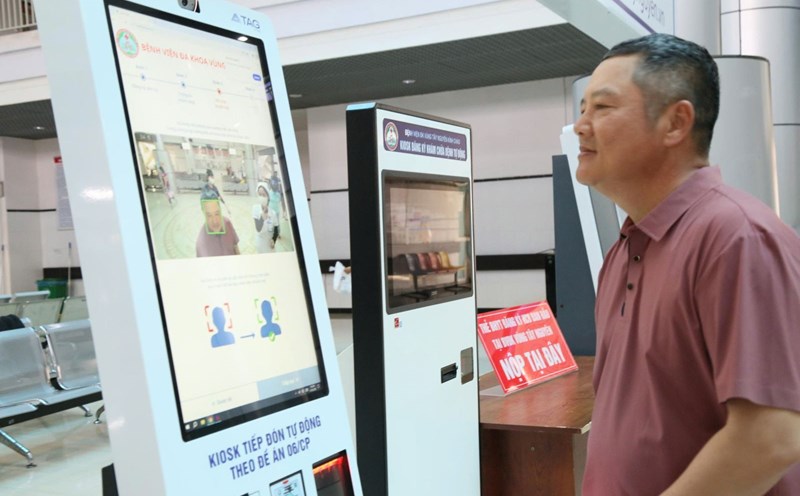Accelerating the implementation of electronic medical records
On March 14, the Prime Minister issued Directive 07/CT-TTg on promoting the application of population data, identification and electronic authentication to serve digital transformation. The Directive requires the Ministry of Health to direct 100% of hospitals to apply electronic medical records, connect data from district and provincial levels to hospitals under the Ministry to reduce duplication testing, reduce costs and time for people, and complete in September 2025.
However, according to the Ministry of Health, it is expected that by September 30, 2025, the whole country will have 657/1,650 medical examination and treatment facilities successfully deploying electronic medical records. From October 1, 2025 to mid-2026, more than 130 medical facilities will officially announce the application of this system, showing that localities are accelerating completion to keep up with the digital transformation roadmap in the health sector.
Minister of Health Dao Hong Lan admitted: The implementation of electronic medical records nationwide is delayed compared to September 30, 2025.
According to the Minister, some hospitals transferred from the Department of Labor, War Invalids and Social Affairs to the Ministry of Health are still facing difficulties in information software systems and due to the arrangement of administrative units in the past, the implementation of bidding services in the past has also been slower than the regulations, so the implementation of electronic medical records nationwide before September 30, 2025 will be delayed.
According to Director of Dong Anh General Hospital Chu Dinh Nang, the initial cost of implementing electronic medical records was estimated at 4 - 6 billion VND, but in reality, it increased to about 10 billion VND - a burden for the autonomous unit. In June 2022, the system was deleted by attackers, forced to manually re- enter, exposing the risk of information insecurity.
Not only Dong Anh, many large hospitals in Hanoi are also facing a similar situation. A representative of a Grade I general hospital said that outdated information technology infrastructure and high security costs make the effective operation of the electronic medical record system a big challenge. When all patient data is digitized, the risk of cyber attacks or information leaks is always present.
In fact, this hospital had to spend nearly a month to fix the problem and re-establish a safe environment for data. During that time, the operating system was unstable, and the medical examination and treatment process was interrupted. When it is not possible to enter data directly, medical staff must return to the hand-recording process, then work overtime at night to enter all data again for more than 10 days. These difficulties show that implementing electronic medical records requires synchronous investment, high security and long-term planning, otherwise it will be difficult to achieve the goal of digital transformation of healthcare.
Currently, Ho Chi Minh City has 153/164 hospitals implementing electronic medical records, reaching 93%. There are 11 hospitals that have not yet implemented electronic medical records, most of which are private, such as Korean Star - Sao Han Cosmetic Surgery Hospital, Van Phuc City Hospital, Tam Tri Saigon General Hospital...
Still stuck
Associate Professor, Dr. Tran Quy Tuong - Chairman of the Vietnam Medical Informatics Association - said that although 100% of medical examination and treatment facilities have applied information technology, built a management system and connected data with Social Insurance, the implementation of electronic medical records is still slow.
The three main reasons for the above situation are that many hospital leaders are not really proactive, still afraid of major changes in management and operation methods; lacking strong enough sanctions to force medical facilities to comply with the roadmap; and there are no clear financial instructions for payment, investment, and operation of the system - a large cost for many hospitals. These barriers limit the number of hospitals applying electronic medical records, and have not created consistency across the health sector.
The benefits of electronic medical records have been clearly seen in reducing procedures, shortening waiting time, limiting errors, supporting quick lookup and data connection, avoiding repeat testing, saving costs and human resources.










